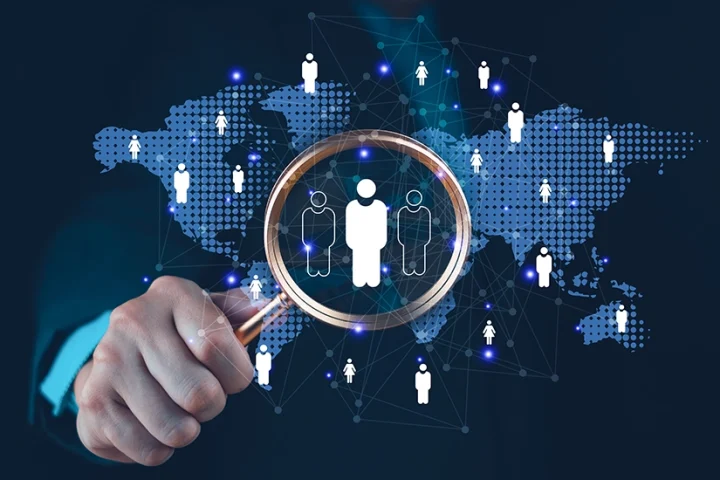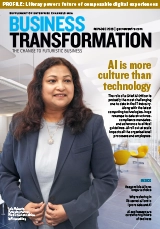The question dominating executive conversations today is no longer whether to adopt artificial intelligence. That moment has passed.
The real question, the one reshaping how business leaders think about structure, people, and performance, is subtler: How do we redesign the enterprise for a world where intelligence is no longer only human?
While AI has moved from experimental to essential, many organizations continue to treat it as an add-on to existing systems used to automate tasks, boost speed, or reduce costs. But these gains, while initially impressive, tend to flatten over time. True transformation doesn’t come from technology alone; it comes from rethinking how intelligence, both human and artificial, is structured, allocated, and scaled across the organization.
At TP, we’ve developed and deployed a model that does exactly that. While data is the foundation, our approach begins not with the technology itself, but with a deeper design decision: What kind of work should be done by machines, and what must remain irrevocably human? That distinction, between automation, augmentation, and empathy, shapes how intelligence flows through the organization.
A Different Way to Think About Intelligence
In this model, work is defined by the type of intelligence it demands.
We use automated systems, what we refer to as “auto-pilot”, to manage high-frequency, rules-based tasks that require reliability and scale, but not nuance. These systems operate quietly and continuously, optimizing processes where human effort adds limited value.
For instance, in financial services, auto-pilot bots handle account verification and transaction categorization across millions of interactions daily, instantly, accurately, and without fatigue. In healthcare, they pre-screen insurance claims for completeness before human review, dramatically reducing backlogs and error rates.
Layered on top of this is co-pilot intelligence: AI-powered tools that support human professionals in real time. These tools are not replacements for people; they’re enhancements. They suggest next-best actions, offer predictive insights, and enable faster, more informed decisions within the flow of work.
In contact centers, for example, co-pilot systems analyze customer tone and history mid-call to recommend the most empathetic response or upsell offer, tailored to both sentiment and service context. In logistics, dispatchers use co-pilot dashboards that forecast delays based on traffic and weather, instantly proposing rerouting options that align with SLA commitments and customer expectations.
At the top of this system sits what we still consider the most critical layer: human intelligence. This is where creativity, emotional insight, contextual judgment, and ethical reasoning live, where people do what only people can.
In trust and safety operations, for instance, human reviewers assess edge cases that algorithmic moderation can’t resolve, bringing cultural nuance and ethical discernment to decisions that impact real lives.
Together, these layers form a hybrid architecture that repositions, not removes, human beings from the system. The goal isn’t simply to automate tasks. It’s to re-architect who does what in a business designed for speed, empathy, and scale.
A Model That Learns While Performing
This model doesn’t just scale work, it evolves with it.
Performance is no longer measured solely by KPIs like call time or conversion rates. We evaluate across new dimensions: co-pilot utilization, AI containment, human-AI collaboration quality, and customer sentiment. Feedback loops are built into the system, enabling both humans and machines to adjust in real time.
And because the model isn’t confined to a single function, its value scales horizontally. What begins in customer experience often expands into operations, compliance, and other core functions, creating a more responsive, integrated business.
In 2025 alone, we’ve earmarked €100 million to strengthen our partnerships and deepen our AI capabilities, building on years of internal investment to embed this model globally.
Where It’s Working
We’ve seen measurable results across sectors.
In banking, conversational AI redirected routine inquiries to digital channels, reducing agent handling time by 30% and freeing advisors to focus on relationship-driven moments. In healthcare, validation tools minimized claim errors, while co-pilot support helped clinical teams prioritize care. In telecom, real-time sentiment analysis allowed frontline teams to preempt escalation—turning reactive service into proactive engagement.
None of these outcomes came from simply adding AI. They came from designing systems where intelligence, human and artificial, is assigned with intent.
Don’t Underestimate Emotional Intelligence
In a world increasingly shaped by algorithms, empathy remains a differentiator.
A model that removes humans from the loop may be fast, but it will be brittle, especially in moments that involve complexity, trust, or cultural nuance. That’s why emotional intelligence remains integral to our approach. In high-stakes environments, the ability to listen deeply, interpret tone, and respond with relevance is not a soft skill, it’s a strategic advantage.
As automation increases, the quality of the human touch will increasingly define how organizations are experienced and remembered.
What This Means for Leadership
The shift we’re describing isn’t about how much AI a company uses.
It’s about whether its leaders have built a system that knows where intelligence belongs.
This requires rethinking workflows, retraining teams, and redefining what performance looks like not just in output, but in orchestration. Not just in speed, but in sense-making.
The companies that lead in the next era won’t be those that adopt the most technology. They’ll be the ones that deploy it with purpose and design their organizations to bring out the best in both people and machines.




















